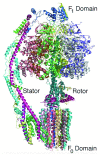Recent innovations in membrane-protein structural biology
- PMID: 30828437
- PMCID: PMC6392159
- DOI: 10.12688/f1000research.16234.1
Recent innovations in membrane-protein structural biology
Abstract
Innovations are expanding the capabilities of experimental investigations of the structural properties of membrane proteins. Traditionally, three-dimensional structures have been determined by measuring x-ray diffraction using protein crystals with a size of least 100 μm. For membrane proteins, achieving crystals suitable for these measurements has been a significant challenge. The availabilities of micro-focus x-ray beams and the new instrumentation of x-ray free-electron lasers have opened up the possibility of using submicrometer-sized crystals. In addition, advances in cryo-electron microscopy have expanded the use of this technique for studies of protein crystals as well as studies of individual proteins as single particles. Together, these approaches provide unprecedented opportunities for the exploration of structural properties of membrane proteins, including dynamical changes during protein function.
Keywords: X-ray free electron laser; cryo-electron microscopy; protein crystallography; protein dynamics.
Conflict of interest statement
No competing interests were disclosed.No competing interests were disclosed.No competing interests were disclosed.No competing interests were disclosed.
Figures





References
Publication types
MeSH terms
Substances
LinkOut - more resources
Full Text Sources

